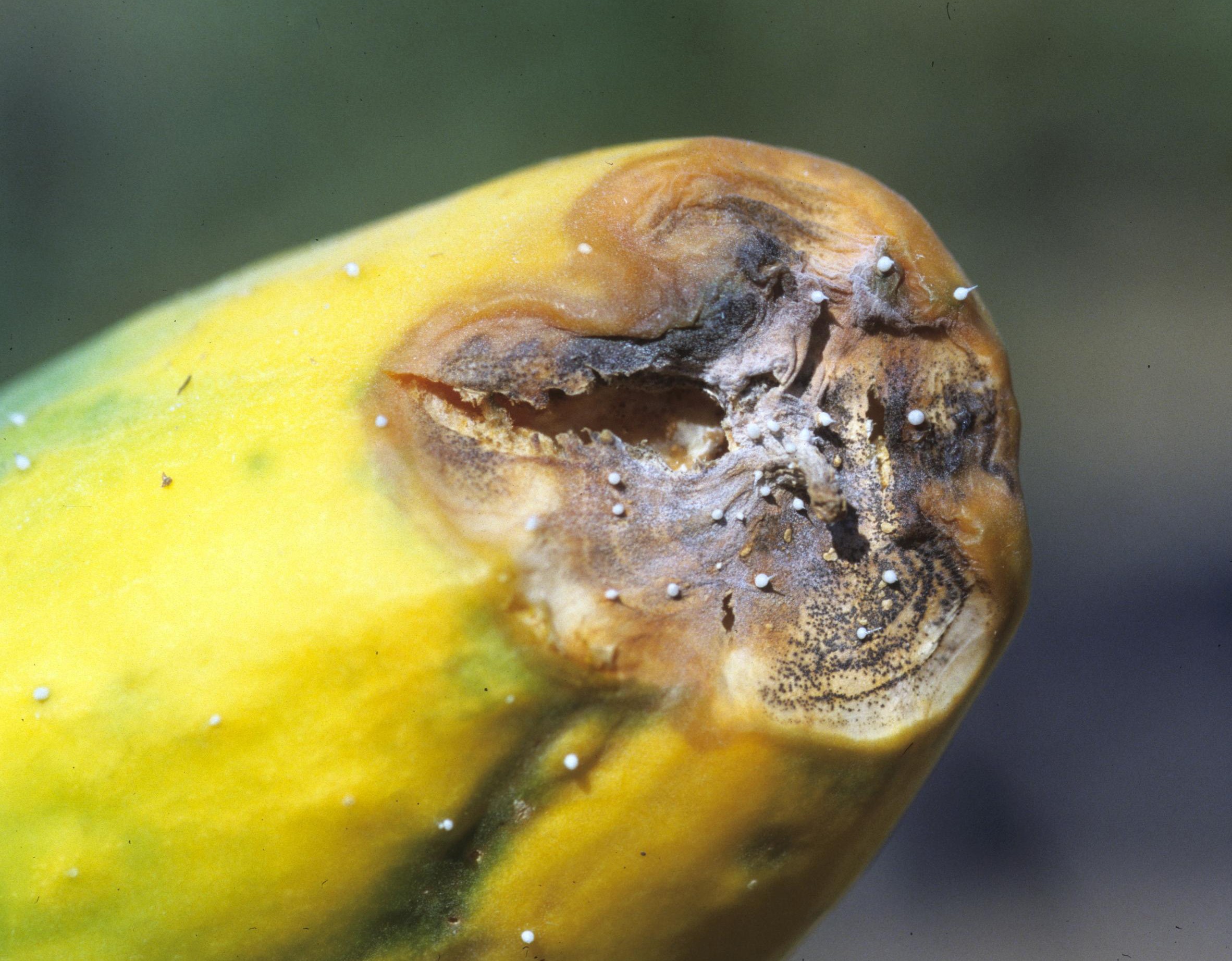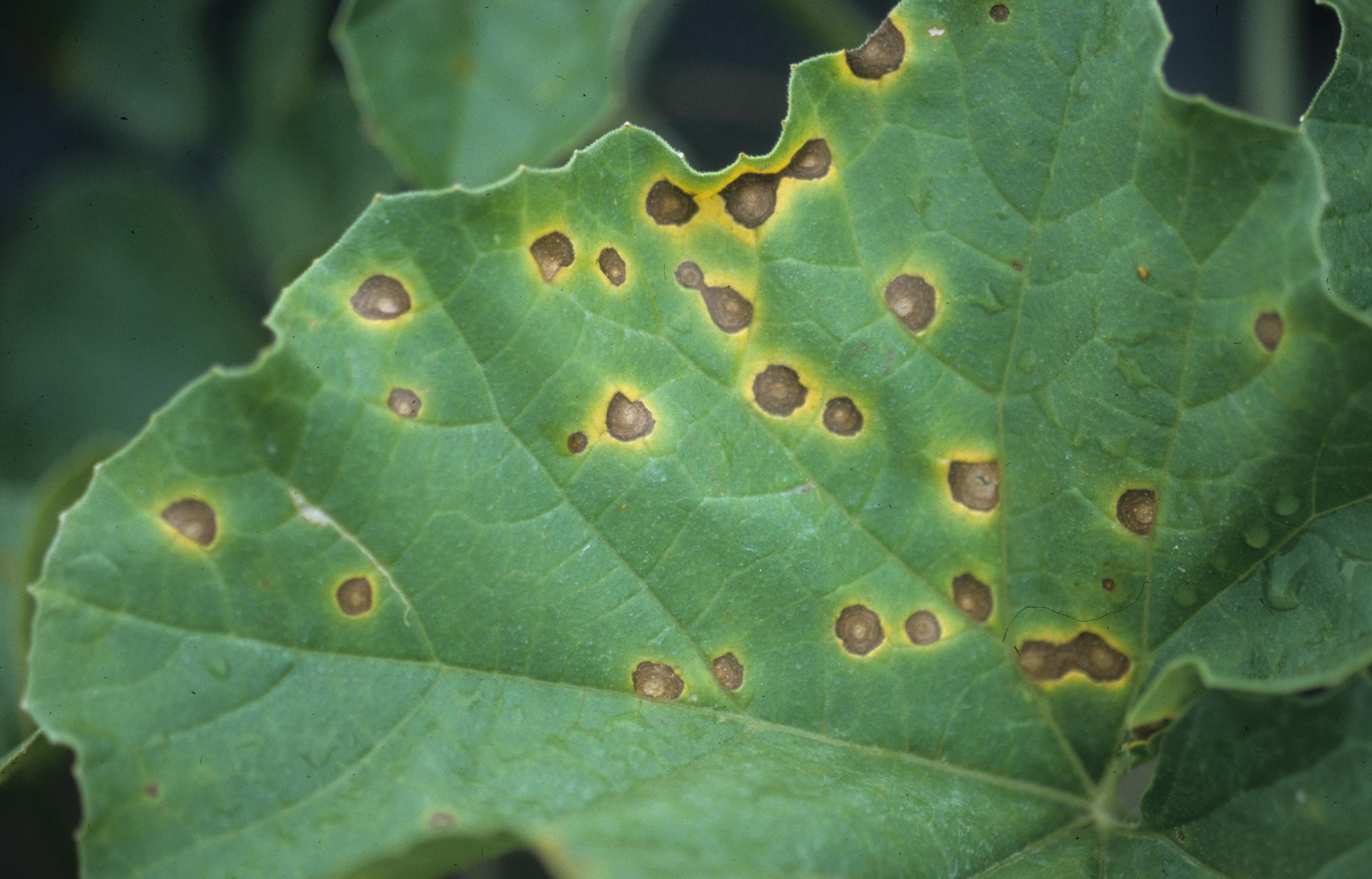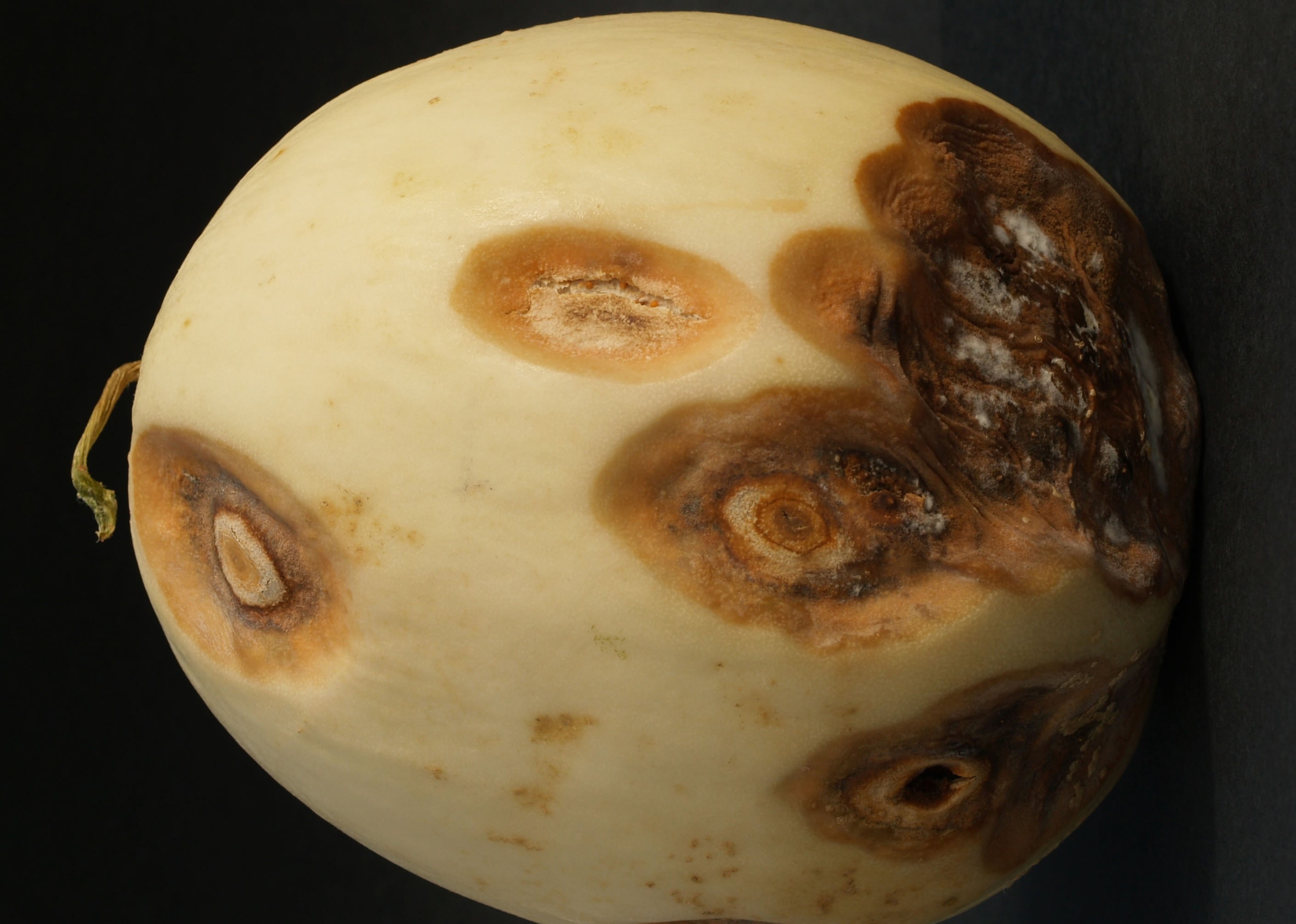Anthracnose of Cucurbit Crops
Return to Diseases
Anthracnose (Colletotrichum orbiculare) is most common on cucumber, muskmelon, gourds, and watermelon. All aboveground plant parts can be affected. Disease may become more severe in late summer, especially if the weather is rainy. Small, circular lesions develop initially on leaves. These lesions enlarge to form large tan to brown spots that may coalesce to create extensive blighting. On watermelon, leaf lesions tend to be smaller, irregularly shaped, and darker in color. The centers of older lesions may crack or fall out entirely. Lesions on stems are tan-brown, somewhat elongated, and sunken. Girdling stem lesions result in vine wilting. On maturing fruit, lesions appear as small, circular, sunken areas. Lesions may grow to 1" or larger on melons. Lesions on watermelon can be cracked and irregularly shaped. Under humid conditions, lesions will blacken and salmon-pink masses of spores develop.
Anthracnose on melon fruit.
(Photo: Bruce Watt, University of Maine, Bugwood.org)

Anthracnose on melon fruit.
(Photo: Gerald Holmes (Strawberry Center), California Polytechnic State University, Bugwood.org)

Anthracnose on foliage.
(Photo: Kenny Seebold, University of Kentucky)
Management:
- Planting of resistant varieties (watermelon—races 1 and 3; cucumber—races 1, 2, and 3)
- Space plants for air circulation and rapid drying.
- Apply protectant fungicides beginning at vine touch.
- Promptly remove and destroy diseased plant material during the growing season.
- Manage weeds and potential alternative hosts
- Promptly destroy crop residues after harvest.
- Deep plow to bury residual inoculum.
- Rotate with nonhost crops for at least 2 years.

